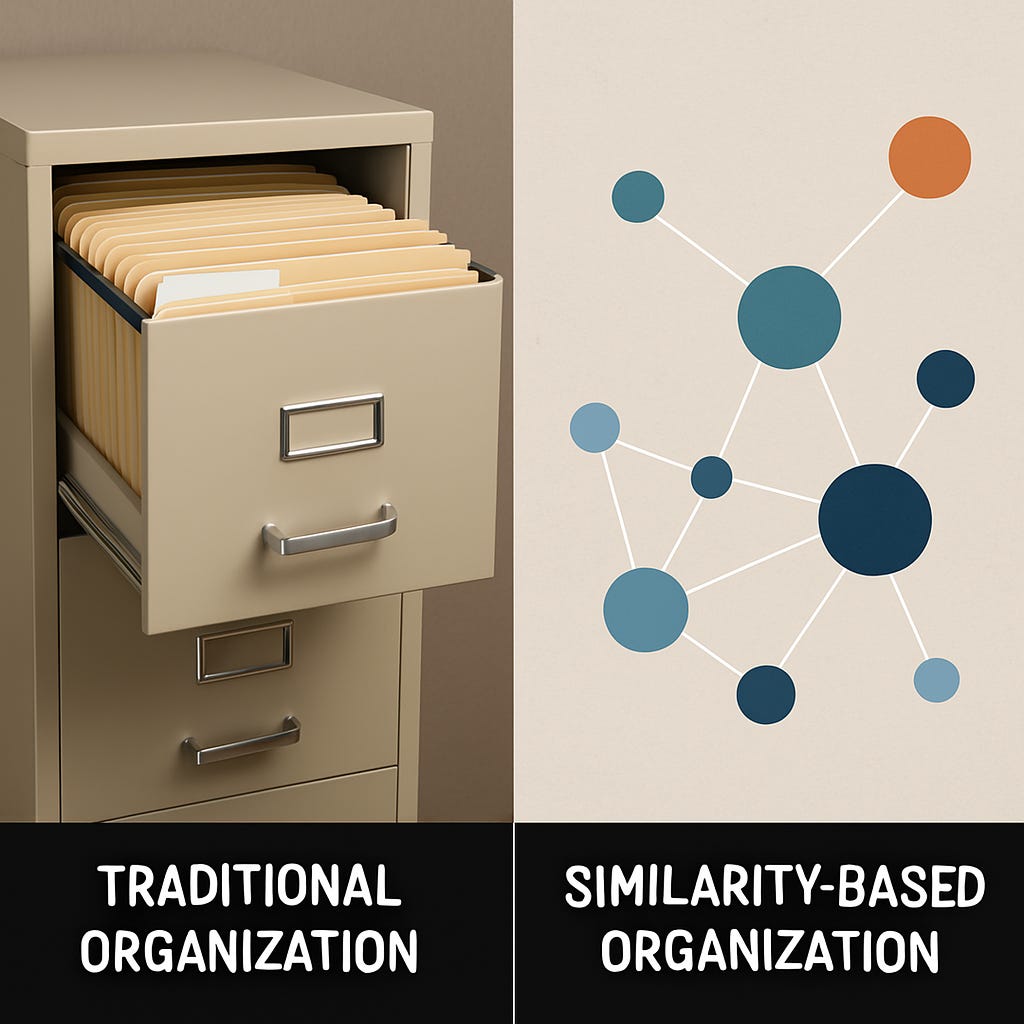The Ultimate Guide to Vector Databases: How They're Revolutionizing Search, AI, and Everything In Between
Introduction: The Silent Revolution Behind Your Tech
Have you ever been amazed when:
Spotify knows exactly what song you'll love next
Google Photos finds every beach vacation picture without you tagging them
ChatGPT seems to understand the exact meaning behind your questions
Your email automatically sorts important messages from junk
Behind all these seemingly magical experiences is a powerful technology called vector databases – possibly the most important technology you've never heard of.
In this comprehensive guide, we'll explore how vector databases work without the confusing technical jargon, why they're completely transforming how we interact with information, and why they've become the backbone of modern AI systems.
What Is a Vector Database? The Similarity Engine
A vector database is fundamentally different from the databases that have powered computing for decades. Instead of organizing information by names, categories, or tags, vector databases organize information by how similar things are to each other.
Traditional Database vs. Vector Database: A Simple Comparison
Traditional Database: "Show me all products in the 'kitchen appliances' category priced under $50"
Vector Database: "Show me products similar to this blender I like, regardless of what category they're in"
The Superpower: Understanding Meaning, Not Just Keywords
When you search Google for "places to see near me," a traditional system would just look for those exact words. But modern search engines use vector databases to understand you're looking for tourist attractions, landmarks, parks, museums, or other points of interest – even if those specific words weren't in your query.
This ability to understand meaning (semantics) rather than just matching keywords is what makes modern AI feel so much more human-like.
How Vector Databases Actually Work: The Inner Mechanics
Step 1: Turning Real-World Information Into Number Lists (Vectors)
Everything in our world – articles, images, sounds, videos, products – needs to be translated into a format computers can process. Vector databases do this by converting each item into a long list of numbers called a "vector" or "embedding."
This conversion is done by specialized AI models called "embedding models." Some popular ones include:
OpenAI's text-embedding models (formerly known as ada-002)
CLIP from OpenAI for images
Sentence Transformers (open-source models)
These embedding models analyze content and produce vectors typically containing hundreds or thousands of numbers. Each number in this list represents some aspect of the content, though we often don't know exactly what each dimension represents.
A simplified example:
Let's imagine vectors with just 3 dimensions:
A news article about climate change: [0.8, 0.2, 0.3]
A scientific paper on global warming: [0.75, 0.15, 0.4]
A sports article about baseball: [0.1, 0.9, 0.6]
The climate change article and global warming paper have similar vectors because they cover related topics. The baseball article has a very different vector.
Keep reading with a 7-day free trial
Subscribe to BSKiller to keep reading this post and get 7 days of free access to the full post archives.




